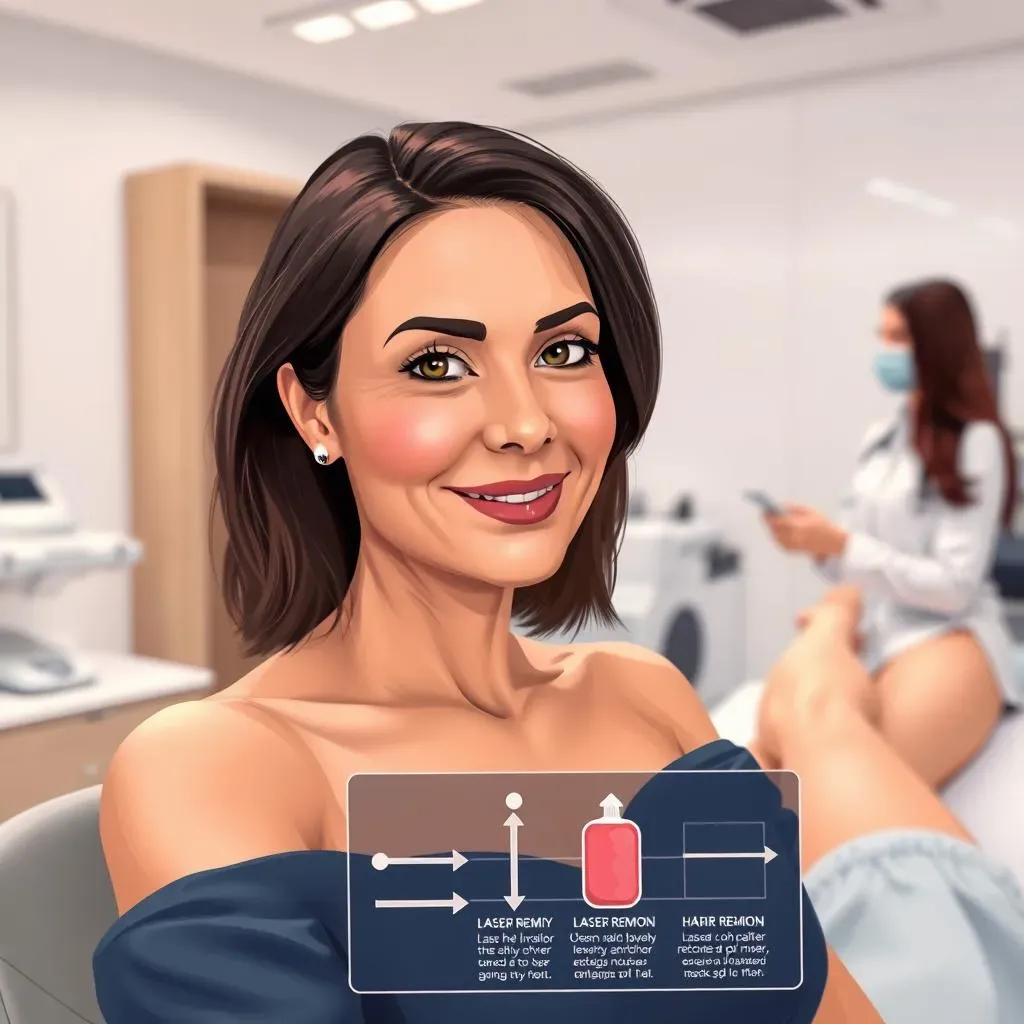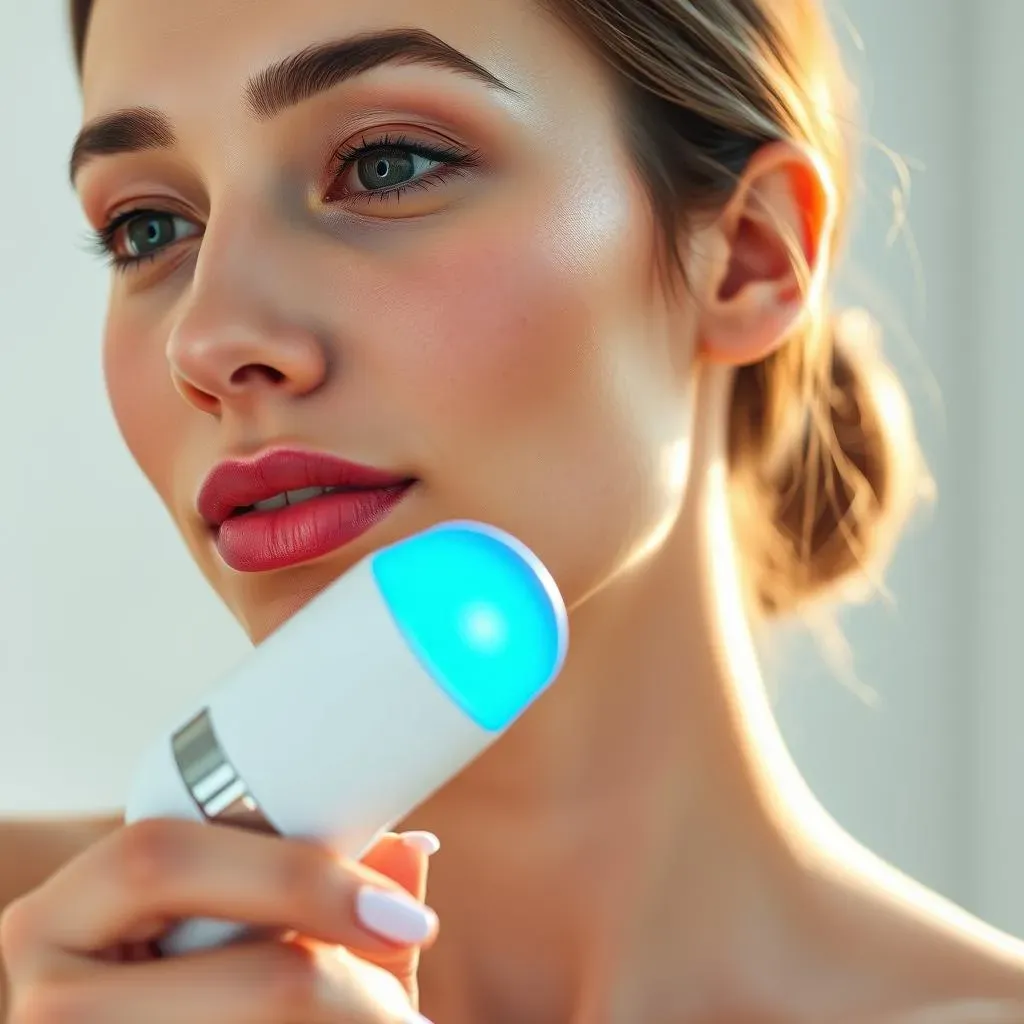Table of Contents
Ingrown hairs can be a frustrating and painful problem for many individuals, particularly those with curly or coarse hair. These unwanted hairs can lead to inflammation, infection, and scarring if left untreated. But there is hope for those struggling with ingrown hairs. Laser hair removal has emerged as a highly effective solution for preventing ingrown hairs by targeting the root cause of the problem: the hair follicle itself. By using laser hair removal on ingrown hair, individuals can significantly reduce the risk of ingrown hairs and enjoy smoother, healthier-looking skin. In this article, we will delve into the world of laser hair removal on ingrown hair, exploring the causes of ingrown hairs, the benefits of laser treatment, and the aftercare required to maintain optimal results. Whether you're tired of dealing with pesky ingrown hairs or simply looking for a more permanent hair removal solution, this guide will walk you through everything you need to know about laser hair removal on ingrown hair.
What Causes Ingrown Hair and How Laser Hair Removal Can Help

What Causes Ingrown Hair and How Laser Hair Removal Can Help
Understanding Ingrown Hairs
Ingrown hairs occur when hair grows back into the skin instead of outward, leading to inflammation, redness, and sometimes infection. This can happen for several reasons, including curly or coarse hair, tight clothing, and poor shaving techniques. Shaving, waxing, and tweezing can all cause hair to be pushed back into the skin, resulting in ingrown hairs.
Ingrown hairs are more common in areas with curly or coarse hair, such as the bikini line, underarms, and chin. They can be painful and may lead to scarring if not properly treated. Traditional methods of hair removal, such as shaving and waxing, provide only temporary solutions and can actually exacerbate the problem.
Causes of Ingrown Hairs | Effects | Traditional Solutions |
|---|---|---|
Curly or coarse hair | Inflammation, redness, infection | Shaving, waxing, tweezing |
Tight clothing | Pain, scarring | Creams, ointments |
Poor shaving techniques | Ingrown hairs, razor burn | Exfoliating, moisturizing |
Laser Hair Removal: A Permanent Solution
Laser hair removal is a revolutionary treatment that targets the root of the problem by destroying the hair follicle. This procedure uses a laser to emit a beam of light that is absorbed by the pigment in the hair, damaging the follicle and preventing future growth. By reducing the amount of hair in the affected area, laser hair removal can significantly decrease the occurrence of ingrown hairs.
Laser hair removal is a relatively painless and permanent solution, making it an attractive option for those tired of dealing with ingrown hairs. The treatment is suitable for most skin types and can be used on various areas of the body, including the face, arms, legs, and bikini line.
- Permanent hair reduction
- Decreased risk of ingrown hairs
- Suitable for most skin types
- Painless and comfortable
How Laser Hair Removal Targets Ingrown Hairs
The laser hair removal process works by targeting the melanin in the hair shaft, which absorbs the laser's energy and converts it into heat. This heat damages the hair follicle, preventing it from producing new hair. Over time, the number of ingrown hairs decreases as the hair follicles are gradually destroyed.
It's essential to choose the right laser for your skin type and hair color to ensure optimal results. Some lasers are designed for darker skin tones, while others are better suited for lighter skin. Consulting a specialist will help determine the most effective treatment plan for your specific needs.
Benefits of Laser Hair Removal for Ingrown Hair Prevention

Benefits of Laser Hair Removal for Ingrown Hair Prevention
Reduced Risk of Ingrown Hairs
Laser hair removal is a highly effective way to prevent ingrown hairs. By destroying the hair follicle, the laser reduces the number of hairs that can grow back into the skin, thus minimizing the risk of ingrown hairs. This is especially beneficial for individuals with curly or coarse hair, who are more prone to ingrown hairs.
The treatment is also long-lasting, with many people experiencing permanent hair reduction after a series of sessions. This means that the need for frequent shaving, waxing, or tweezing is greatly reduced, which in turn decreases the likelihood of ingrown hairs. Laser hair removal provides a solution that is both effective and convenient, allowing individuals to enjoy smoother skin with minimal maintenance.
Benefits of Laser Hair Removal | Effects on Ingrown Hairs | Long-Term Results |
|---|---|---|
Permanent hair reduction | Minimized risk of ingrown hairs | Smooth, healthy-looking skin |
Reduced need for shaving and waxing | Decreased inflammation and infection | Increased confidence and comfort |
Additional Benefits for Skin Health
Laser hair removal not only prevents ingrown hairs but also promotes overall skin health. By reducing the number of hairs, the treatment minimizes the risk of folliculitis, a condition characterized by inflamed hair follicles. This can lead to a significant reduction in skin irritation, redness, and ingrown hairs.
Furthermore, laser hair removal encourages healthier skin by reducing the need for harsh hair removal methods. Shaving and waxing can cause micro-tears in the skin, leading to dryness and irritation. By eliminating these methods, laser hair removal allows the skin to heal and regain its natural moisture balance, resulting in softer and smoother skin.
- Improved skin texture and tone
- Reduced risk of folliculitis and other skin conditions
- Increased skin hydration and moisture
Laser Hair Removal on Ingrown Hair: Treatment and Aftercare

Laser Hair Removal on Ingrown Hair: Treatment and Aftercare
Preparing for Laser Hair Removal Treatment
Before undergoing laser hair removal, it's essential to prepare your skin for the treatment. This includes avoiding sun exposure, tanning beds, and waxing for at least two weeks prior to the procedure. You should also avoid shaving, tweezing, or using depilatory creams for a few days before the treatment, as this can cause irritation and affect the laser's ability to target the hair follicle.
On the day of the treatment, arrive with clean skin, free of makeup, lotion, and perfume. Remove any jewelry that may interfere with the laser. Your technician will provide you with protective eyewear and may apply a cooling gel to the treatment area to minimize discomfort.
Pre-Treatment Preparations | Benefits | Potential Risks |
|---|---|---|
Avoid sun exposure and tanning beds | Reduces risk of complications | Skin irritation, increased risk of side effects |
Refrain from waxing, tweezing, and shaving | Allows laser to target hair follicle effectively | Irritation, ingrown hairs |
Arrive with clean skin | Ensures effective treatment | Reduced efficacy, potential side effects |
During the Laser Hair Removal Procedure
The laser hair removal procedure typically takes anywhere from a few minutes to an hour, depending on the size of the treatment area. You will feel a mild stinging sensation as the laser emits pulses of light, but this is usually tolerable. Some people may experience redness and swelling after the treatment, but these side effects are temporary and should subside within a few hours.
It's essential to follow the technician's instructions during the treatment, which may include wearing protective eyewear and applying a cooling gel to the skin. You may also be given a topical anesthetic to numb the area, although this is not always necessary.
- Wear protective eyewear
- Apply cooling gel to minimize discomfort
- Follow technician's instructions
- Avoid looking directly at the laser
Aftercare and Maintenance
After the laser hair removal treatment, it's crucial to follow a proper aftercare routine to ensure optimal results and minimize potential side effects. This includes avoiding direct sun exposure, using gentle skincare products, and avoiding strenuous activities for at least 24 hours.
Exfoliating the skin gently can help remove dead skin cells and prevent ingrown hairs. Moisturizing regularly will keep the skin hydrated and promote healing. It's also essential to attend all scheduled follow-up treatments to achieve the best possible results.
Aftercare Tips | Benefits | Potential Risks |
|---|---|---|
Avoid direct sun exposure | Reduces risk of skin damage | Prolonged healing time, increased risk of side effects |
Use gentle skincare products | Promotes skin healing, minimizes irritation | Skin irritation, allergic reactions |
Exfoliate gently | Removes dead skin cells, prevents ingrown hairs | Over-exfoliation, skin irritation |
LongTerm Results: Does Laser Hair Removal Completely Eliminate Ingrown Hair?

LongTerm Results: Does Laser Hair Removal Completely Eliminate Ingrown Hair?
Long-Term Results: Does Laser Hair Removal Completely Eliminate Ingrown Hair?
Laser hair removal is a highly effective solution for preventing ingrown hairs, but does it completely eliminate them? The answer is not a simple yes or no. While laser hair removal can significantly reduce the occurrence of ingrown hairs, it may not completely eliminate them, especially in the early stages of treatment.
After a series of laser hair removal sessions, most people experience a substantial reduction in hair growth, which in turn reduces the risk of ingrown hairs. However, some hairs may still grow back, particularly if they are not targeted during the treatment or if the treatment is not performed at the optimal time.
Number of Sessions | Percentage of Hair Reduction | Effectiveness in Preventing Ingrown Hairs |
|---|---|---|
3-4 sessions | 70-80% | Significant reduction in ingrown hairs |
5-6 sessions | 90-95% | Substantial reduction in ingrown hairs |
It's essential to note that laser hair removal is not a one-time fix. Multiple sessions are often required to achieve optimal results, and maintenance treatments may be necessary to ensure the continued reduction of ingrown hairs.
Factors Influencing Long-Term Results
Several factors can influence the long-term results of laser hair removal on ingrown hair. These include skin type, hair color, and the frequency of treatments. Individuals with darker skin tones or lighter hair colors may require more sessions or specialized lasers to achieve optimal results.
Regular exfoliation and moisturizing can also play a significant role in maintaining the health of the skin and preventing ingrown hairs after laser hair removal. By following a consistent skincare routine, individuals can help ensure the long-term effectiveness of the treatment.
- Exfoliate regularly to remove dead skin cells
- Moisturize to keep the skin hydrated and healthy
- Avoid harsh skincare products that can irritate the skin
While laser hair removal is an effective solution for preventing ingrown hairs, it's crucial to have realistic expectations. Some ingrown hairs may still occur, especially during the early stages of treatment. However, with time and patience, the results can be dramatic, leading to smoother, healthier-looking skin and a significant reduction in ingrown hairs.
Conclusion: Achieving Smooth Skin with Laser Hair Removal on Ingrown Hair
In conclusion, laser hair removal on ingrown hair is a game-changer for those seeking a long-term solution to this common problem. By understanding the causes of ingrown hairs and the benefits of laser treatment, individuals can take the first step towards achieving smoother, healthier-looking skin. While it's essential to follow proper aftercare and maintenance to maximize results, the benefits of laser hair removal far outweigh the drawbacks. With its ability to permanently reduce hair growth and minimize the risk of ingrown hairs, laser hair removal is an investment worth considering. So why wait? Take control of your skin today and discover the transformative power of laser hair removal on ingrown hair.
